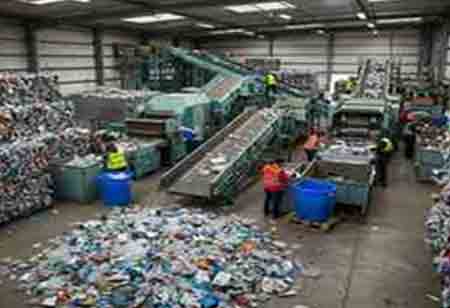Thank you for Subscribing to Environmental Business Review Weekly Brief
There are eight innovative waste management technologies that are revolutionizing the industry
To fills the gap, communities must embrace smart waste management technologies that enhance efficiency, minimize collection costs, and redirect more trash away from landfills.

By
Environmental Business Review | Friday, October 22, 2021
Stay ahead of the industry with exclusive feature stories on the top companies, expert insights and the latest news delivered straight to your inbox. Subscribe today.
To fills the gap, communities must embrace smart waste management technologies that enhance efficiency, minimize collection costs, and redirect more trash away from landfills.
FREMONT, CA: Smart waste management is a system that utilizes technology to make trash gathering more efficient, cost-effective, and eco-friendly. Most of these systems are appointed with the Internet of Things (IoT). This monitoring technology collects and tracks real-time data to help optimize waste collection and spur future innovation.
Why Is Smart Waste Management Important?
As per the Environmental Protection Agency (EPA), approximately 75% of the waste stream in the US is recyclable, but just about 30% of recyclable materials get recycled. Considering humans generate just about 2 billion tons of waste yearly, a lot of unnecessary trash ends up in the world’s landfills and waterways.
The world’s trash problem isn’t going away soon, and traditional waste management systems aren’t equipped to handle the further trash produced by growing populations. To endorse and bridge the gap, communities must embrace smart waste management technologies that enhance efficiency, lower assemblage costs, and distract more trash from landfills.
Here are eight inventive waste management technologies that are revolutionizing the industry
The following technologies incorporate IoT data analytics with modern solutions to help recognize challenges and improve as they go.
1. Smart Waste Bins
People don’t usually bother to sort their waste into the proper waste or recycling bins when they stay at their own devices. To help decrease improper recycling sorting, the Polish company Bin-e designed a smart waste bin that employs artificial intelligence-based object gratitude to automatically sort recyclables into individual compartments. After segregation, the machine compresses the waste and supervises how full each bin is.
Smart waste bins hold human error apart from the initial sorting process, making material processing quicker and easier for recycling facilities. This can diminish waste management costs by as much as 80% and radically improve employee efficiency.
2. Waste Level Sensors
Homes and businesses use routine waste collection services to dispose of garbage.
To help decrease unnecessary trips to and from landfills, companies and communities can establish waste-level sensors in bins or dustbins of any size. These devices gather and store data on fill levels, enabling collection services to predict how often bins need to be emptied. This also aids avoid public containers from overflowing and contaminating the surrounding area.
3.AI Recycling Robots
Recycling centers are crucial in reducing the amount of trash in landfills and waterways yearly.
Recycling robots are designed to precisely identify and sort recyclable materials, raising efficiency and reducing the need for human workers. This saves recycling centers money over time and aids divert materials that would otherwise conclude in landfills.
4. Garbage Truck Weighing Mechanisms
Like waste level sensors, weighing mechanisms positioned in garbage trucks can help forecast fill levels and lower collection trips. Cities can utilize this technology to more accurately predict how often they must send their trucks out and reduce annual collection costs. They do this by testing & storing the weight of waste containers, then utilizing the data to predict fill levels over time.
5. Pneumatic Waste Pipes
As inhabitants increase in urban areas, so does the necessity for waste management solutions that can accommodate rising amounts of trash. Some cities are taking on this issue by installing pneumatic waste disposal bins that join a series of underground pipes.
Trash moves with the pipes to a waste-gathering plant, where it can be sorted or hauled away. This system eliminates traditional waste collection, decreases energy costs, and boosts overall efficiency.
6. Solar-Powered Trash Compactors
To improve collection efficiency and decrease trips to and from the dump, manufacturer Ecube Labs created a solar-powered trash compactor that can obstruct five times more than traditional trash bins.
These machines contract trash as it accumulates to increase bin capacity, and they gather and convey data on fill and collection times to help streamline the collection process.
7. E-Waste Kiosks
Electronic waste that is wrongly disposed of can harm humans and the environment. Fortunately, many companies and organizations have begun e-waste recycling programs that will accept — and even refund you for — old electronic devices.
ecoATM, a smart recycling company, took this idea forward by creating a line of e-waste recycling kiosks that enable you to exchange your electronics for cash on the spot. While they won’t often offer cash for broken or destroyed devices, they accept phones, tablets, and MP3 players in any condition and ensure that they are recycled properly.
8. Recycling Apps
Classifying contaminated waste is one of the biggest challenges for recycling centers. To restrict unrecyclable materials from entering these centers, organizations have released apps like RecycleNation and recycle that make recycling simple for individuals.
These apps offer users data on recycling rates and center places, and their comprehensive lists of materials support users in determining which items can be recycled.





